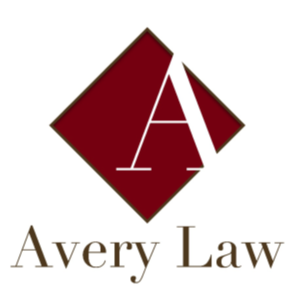On March 27, 2020 President Trump signed into law the Corona Virus Aid, Relief, and Economic Security Act of 2020. The impact of this law will affect us all. Of course a lot is still uncertain as the rules and regulations affecting it’s administration are still being implemented and as Congress is already
talking about followup legislation to amend some parts and to provide additional funding. Therefore, please consider this summary as a current general outline of a fast changing relief package.
Changes Affecting Current and Prospective Bankruptcy Clients Exclusion From Means Test
The bankruptcy code establishes a MEANS test to determine a debtor’s eligibility for a straight Chapter 7 bankruptcy. I always jokingly call it the “limbo” test, a bar set at the height of the median gross income based on a families household size in debtor’s home state. To qualify for a Chapter 7 bankruptcy a debtor needs to pass beneath the bar.
The CARES act provides that any payments a person receives under the act (such as individual stimulus payments, supplemental unemployment or SBA business grants) are not to be included in a persons income for purposes of passing the Means test (limbo bar).
Extension of Chapter 13 Plans
If you are a Chapter 13 Debtor and your Plan was confirmed before March 27, 2020 the length of your payment plan can be extended, if the reason of the extension is Covid-19 related, from the current maximum of five years, up to a maximum of seven years. This extension must be applied for within the first year of passage of the Act as the Act sunsets after one year.
SUSPENSION OF MORTGAGE FORECLOSURE FOR ALL DEBTOR’S
Whether in or out of bankruptcy, no federally backed mortgage loan foreclosure can be commenced before 60 days after March 18,2020 (so May 17, 2020). (This includes VA, FHA, Fannie Mae or Freddy Mac). If you need an extension on your monthly mortgage payment because of a Covid-19 related issue and you have a federally backed mortgage you can ask for a 180 day forbearance of payments, which can later be renewed for another 180 days. No fees, penalties, or interest will be charged beyond what would have been charged had payments been timely made.
First Caveat: Please remember the original principal on the loan will still be owed and will eventually need to be paid. You will just be extending full amortization of the loan into a longer repayment period or into higher monthly payments after the foreclosure ends, depending on the yet to be determined rules and regulations.
Second Caveat: Remember you have to contact your servicer and ask for the forebearance.
Covid-19 Stimulus Payments
Each taxpayer who has filed a federal tax return for 2018 or 2019 and all non-filers such as persons on social security will receive a one-time stimulus payment of $1200 per adult and $500 per child (excepting 17 and 18 year olds), directly into the bank account into which your federal tax refunds
or payments were previously made. There are household income caps on this, $75,000 for a single person, $112,500 for head of household, $150,000 for a married couple.
No application is necessary. Many persons have already received these payments. Unfortunately you will be delayed if you used Turbo Tax, H&R Block or similar tax preparation companies as they used their account information rather than yours.
If you don’t have a bank account on file with the IRS they will mail a check to you at the address on your last tax return but I understand that it may take up to 10 weeks to reach everyone. If you have moved or changed you bank account or address you may update your payment information at IRS.gov.
then click on Get My Payment.
In the next 3 weeks everyone should get a notice of where their stimulus payment went. None of these stimulus payments will be taxable on your next year’s tax return. Congress is already talking about a second round of direct stimulus payments. When and if that will happen and how much it will be is still not determined, although the last I heard they were talking about another $1500 per adult. Please don’t plan your budget around this. It is not for sure. These Covid-19 stimulus payments will not be offset (taken) by the IRS for back taxes or student loans. In addition the government rhetoric (although not statutorily exempted) is that Chapter 7 and Chapter 13 trustees better not attempt to take them either.
Avery Law will fiercely defend your right to keep the payment should an aberrant trustee suggest otherwise.These stimulus payments can be offset by State Child Enforcement Agency’s however if you have a child support arrearage.
Federal Student Loans
CARES provides for an automatic payment suspension or waiver of payments for six months on federal student loans. No interest will be accruing during this six month waiver of payments period, nor will any negative credit be reported to the credit reporting agencies.
TIP - Student loans that are in default can be brought out of default if they have had timely payments made for nine consecutive months. Logic says if you commenced making timely monthly payments after the six months waiver period, perhaps your loan will be out of default after just three monthly payments. That’s just a thought, I have not seen any rules or policies on that.
Pandemic Unemployment Assistance
The CARES Act provides that the regular state unemployment one week waiting period after a person’s initial application for unemployment will be waived. You will receive benefits from the date of your application. In addition each person receiving unemployment benefits will receive an additional
$600/wk on top of their regular state unemployment benefits until July 31, 2020. Regular state unemployment benefits have been extended from 26 weeks to 39 weeks. Unemployment benefits, including this $600/wk supplemental benefit, will be taxable on your 2020 tax return.
Pandemic Emergency Unemployment Assistance
Many people affected by Covid-19 work in the “gig” economy and otherwise are not eligible for regular state unemployment benefits. The CARES Act provides that unemployment benefits shall be available to all of those affected workers, such as the self-employed, independent contractors, part-time
workers, free lancers, and those workers who otherwise wouldn’t qualify because of insufficient work history. All of the above affected workers will qualify for unemployment benefits for up to 39 weeks but not later than December 31, 2020 the date of the expiration of the Act. The requirement that a person on unemployment has to be available for work and looking for work are waived if you have contracted Covid-19, are quarantined, or are caring for dependents at home because of the pandemic.
The CARES Act, in order to encourage employers to keep workers employed at least part-time, or by creating work-sharing jobs, provides that all workers with short time compensation at work can also receive partial unemployment compensation.
CARES Act for Small Businesses
The Cares Act provides some assistance to employers who keep their businesses open and rather than lay employees off, maintain their workforce. These are the Emergency Economic Injury Grant and the Paycheck Protection Program. Both of these programs are administered by the Small Business Administration. To apply go to covid-19 relief.sba.gov.
Emergency Economic Injury Grant
This program was designed to provide $10,000 grants to all qualified businesses impacted by Covid-19 until the $10 billion dollars appropriated by Congress was exhausted to applicants on a first come first serve basis. It was designed to include independent contractors, 1099 employees and self-employed persons without employees. Unfortunately 3,000,000 applications were received the first day, swamping the program. The latest information I have received from the SBA is that the grants are now being adjusted to go only to businesses with employees, $1000 per employee up to a maximum of 10 employees or $10,000. There is talk of a second round of funding so if your business has employees you should apply in the event new funding is appropriated.
Paycheck Protection Program
This program is designed to assist employers in maintaining their payroll and to avoid having to lay people off. To apply you must use an SBA lender and it’s administered as a loan. Most lenders require a balance sheet, a copy of your last years tax return and proof of the amount of payroll you actually paid for the year 2019. To that sum you can add actual costs of payroll processing fees, and actual costs of group health insurance and the employers matching contribution to Simple IRA’s or 401(k)’s. If the company owner is compensated by business draws rather than a salary, that amount also can be added to the above to reach the “average monthly payroll.”
The SBA guarantees the loan for 2 ½ times the “average monthly payroll” and the loan bears interest at 1 percent and is due within two years. In the event the employer uses at least 75% of the loan within eight weeks of funding in maintaining payroll and is not laying employees off, that amount is forgiven. To the extent the other 25% is used to pay rent, utilities and interest on loans preexisting March 27, 2020 and is spent within eight weeks to keep the business operating, those amounts also are eligible for loan forgiveness. The loan amounts forgiven are not taxable as income to the applicant for income tax purposes.
TIP - It seems prudence would dictate an employer open a new payroll account and pay payroll, rents and utilities only from these funds, so issues with commingling or tracing are minimized.
This is of course just a short summary of the CARES Act which we deemed most relevant for our clientele. It is not legal advice and is provided for educational purposes only. If you need more detailed information, talk to the government agency or bank administering your matters. You may of course
email me at inquires@averylaw.net

John O Avery
Avery Law
April 16, 2020
“We Are Here To Help”


